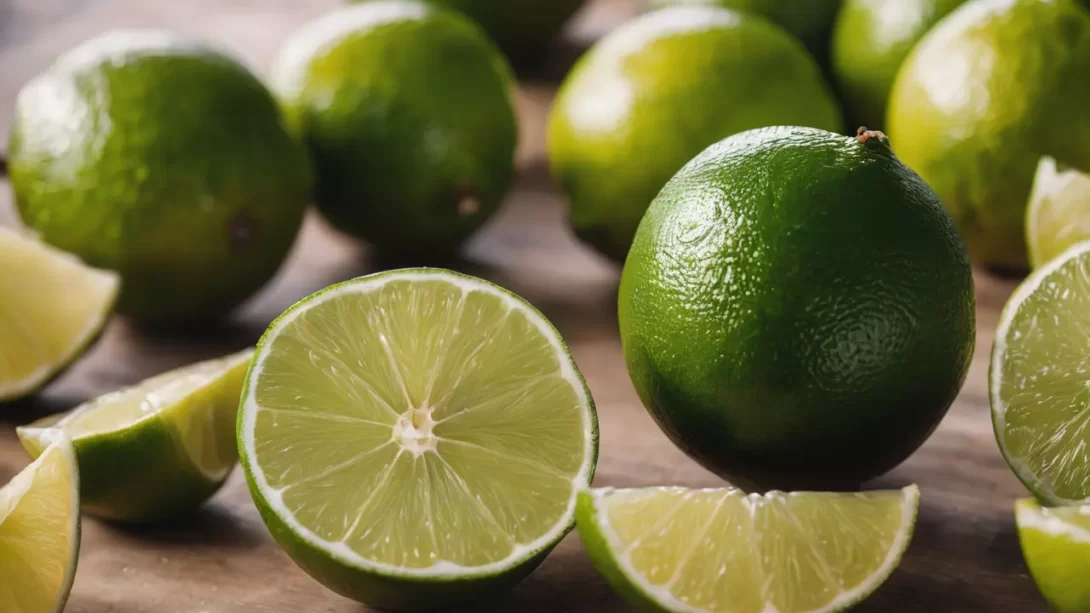There’s a common misconception that limes are simply unripe lemons. This belief likely stems from their similar appearance and shared citrus family, but it’s not accurate. In reality, limes and lemons are distinct fruits, each with their unique characteristics and uses. This article will explore the differences between these two popular citrus fruits and dispel the myth that a lime is just an unripe lemon.
Botanical Differences
Botanically, limes and lemons belong to the same family, Rutaceae, but they are different species. Lemons are classified as Citrus limon, while limes fall under several species, including Citrus aurantiifolia (Key lime) and Citrus latifolia (Persian lime). There are also various cultivars within these species, further diversifying the types of limes and lemons available. These botanical differences are the first indication that limes and lemons are indeed separate fruits.
Physical Characteristics
Physically, limes and lemons have several distinguishing features. While both start green, ripe lemons turn a bright yellow, whereas most ripe limes retain a green hue, although some varieties can turn yellowish. In terms of size, limes are generally smaller and rounder than lemons, which are typically larger and have a more elongated shape. The texture of their skin also differs; lemon skin is usually textured with a pitted surface, while lime skin is smoother.
Limes and lemons also differ in their pulp structure and seed quantity. Lemons tend to have more seeds and a slightly thicker pith compared to limes. These physical characteristics are easy to observe and can help in differentiating between the two fruits.
Flavor Profiles
The taste profiles of limes and lemons are distinctly different, contributing to their unique culinary roles. Lemons are known for their bright, acidic flavor with a balance of sweetness. This makes them ideal for both savory dishes and desserts. On the other hand, limes have a more complex flavor profile. They are generally more acidic and less sweet than lemons, with a slightly bitter undertone. This tartness is especially pronounced in Key limes, which are often used in desserts like key lime pie.
Growth and Ripening Process
Understanding the growth and ripening process of these fruits further highlights their differences. Lemons and limes grow on trees in similar climates and conditions, but their ripening timelines differ. Lemons reach maturity when they turn a vibrant yellow, indicating a drop in acidity and a rise in sugar content. Limes, however, are often harvested when they are still green and at their peak acidity. Some lime varieties do turn yellow when fully ripe, but they are usually picked earlier for their tart flavor.
Culinary Uses
In the kitchen, limes and lemons are not typically interchangeable due to their distinct flavors. Limes are a staple in Mexican, Indian, and Southeast Asian cuisines, adding a punch to dishes like tacos, chutneys, and curries. Their zest and juice are also integral to many cocktails and beverages. Lemons, with their bright and slightly sweet flavor, are more commonly used in Mediterranean and Western cooking. They are essential for dishes like lemon chicken, lemon meringue pie, and various sauces and dressings.
Nutritional Content
While both limes and lemons are rich in vitamin C and other nutrients, there are subtle differences in their nutritional profiles. Lemons generally contain slightly more vitamin C compared to limes. For instance, one medium lemon offers about 30-40% of the daily recommended intake of vitamin C, while a similar serving of lime provides around 20-25%. However, limes are a good source of vitamin A, which is less prevalent in lemons. Both fruits also contain small amounts of minerals like potassium and magnesium and are low in calories, making them a healthy addition to any diet.
Conclusion
To conclude, limes are not simply unripe lemons; they are distinct fruits with unique characteristics. From their botanical classification to physical attributes, flavor profiles, and nutritional content, limes and lemons differ in several aspects. While they share some similarities as members of the citrus family, their differences in taste and culinary use are significant.
Understanding these differences is essential for both cooking and nutritional purposes. Whether you’re squeezing a lime over a taco or adding lemon zest to a cake, each fruit brings its unique flavor and benefits to the table. So next time you come across a lime or lemon, remember that these citrus fruits, while related, are uniquely special in their own right.



